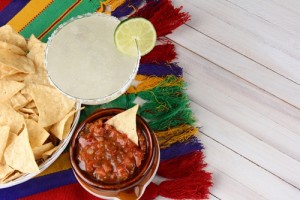Some Like It Hot: 4 Tips For Making Sensational Salsa

According to Statista, salsa did big business across much of 2014. Between the seven or so major retailers, sales of salsa reached in excess of $857.3 million. But why go out and buy salsa when you can use your skills from culinary academy to make your own? All you need are a few ingredients, a little time in the kitchen and the following handy tips:
Know your salsas
Across Mexico, there are a vast number of individual salsa mixes, each with its own unique flavor and overall heat rating. For instance, salsa negra features oil, garlic and dried chilies, while pico de gallo is made mostly with raw tomatoes, onions, cilantro and lime juice. Speaking with Epicurious, chef and author James Patterson said that all salsa recipes require three main building blocks: salt, cilantro and fresh ground pepper. These three will help build the foundation of the salsa’s flavoring, and you as the chef are free to add in chilies and other vegetables to augment the final product.
A quick word on salt
As mentioned above, salt is one of the fundamental ingredients of any salsa recipe. There is no set rule on how much salt to add, but generally speaking, the average salsa recipe should not require more than a few quick pinches. However, as The Smithsonian Magazine pointed out, the kind of salt you use does matter. Because it’s so high in sodium and iodine, table salt isn’t generally the best option for salsa. Instead, you want to use something like kosher or coarse salt, which are somewhat healthier options.
Use some elbow grease
When it comes to making salsa, extra smart chefs will help expedite the process by relying on technology to lend a hand. When you’re working with garlic and various herbs, a food processor is your best bet, as these machines can quickly and efficiently pulverize the ingredients. However, for most other ingredients – like the chilies, onions, etc. – rely on a good old fashioned knife to give you better control of the size of the various chunks. For some ingredients, mainly the onion, processors can draw out too much flavor and eventually overpower your salsa.
The power of tomatoes
Perhaps more than the actual heat, the centerpiece of almost any salsa recipe are the tomatoes. That’s why it’s important to pick only the best for your final concoction. According to Bon Appetit, there are several different varieties worthy of salsa, including vine-ripened, plum, beefsteak and roma tomatoes. Just avoid the popular heirloom tomatoes, as these are better suited for other meals. No matter what kind if tomato you choose, though, it’s important to de-seed the tomatoes. If they are not removed, seeds can cause the tomato to begin breaking down, which results in salsa that’s got more in common with soup than anything else.






Recent Comments